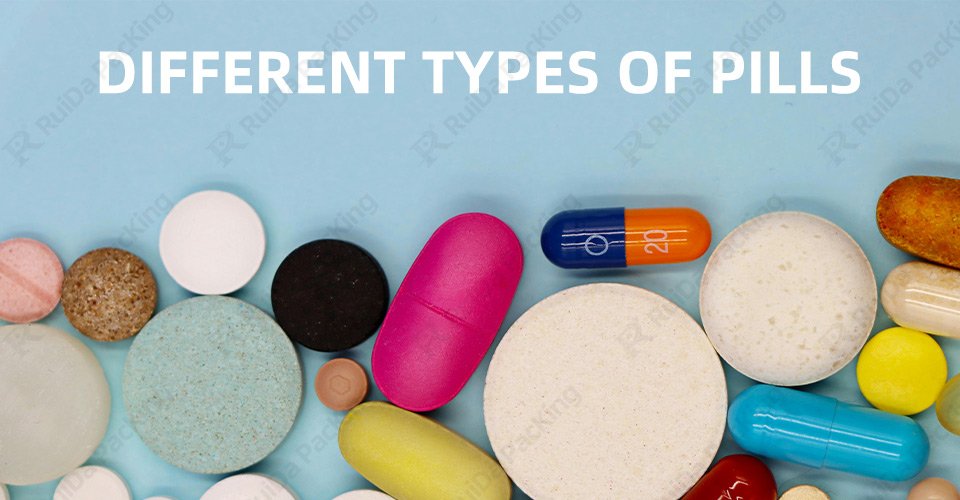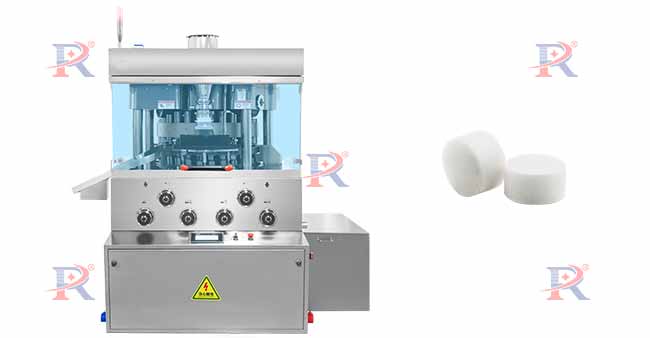Como consumidor, probablemente hayas encontrado varios tipos de pastillas en tu vida diaria, desde analgésicos de venta libre hasta medicamentos con receta. Cada tipo de pastilla está diseñada con una finalidad específica y ofrece beneficios únicos según su composición, mecanismo de liberación y uso previsto. Comprender las diferencias puede ayudarte a tomar decisiones informadas sobre tu salud. Esta guía te guiará por los distintos tipos de pastillas, explicando sus características, usos y ventajas.

1. Comprimidos: la forma más común de píldoras
Tabletas Son el tipo de píldora más utilizado y ofrecen una forma rentable y versátil de administrar medicamentos. Se crean comprimiendo ingredientes en polvo para formar una dosis sólida.
Tipos de tabletas
- Tabletas convencionales:Éstos se disuelven en el estómago y liberan el medicamento rápidamente.
- Comprimidos masticables:Diseñado para masticarse antes de tragar, a menudo se utiliza para antiácidos o medicamentos para niños.
- Comprimidos efervescentes:Disuélvalos en agua para crear una bebida gaseosa, lo que hace que sean más fáciles de ingerir.
- Comprimidos con recubrimiento entérico:Tienen una capa protectora para evitar la disolución en el estómago, asegurando que el medicamento se libere en los intestinos.
Tipo | Característica clave | Caso de uso |
Tabletas convencionales | Disolución rápida | Medicación general |
Comprimidos masticables | Fácil de ingerir, no requiere agua. | Antiácidos, vitaminas |
Comprimidos efervescentes | Se disuelve en agua, suave para el estómago. | Alivio del dolor, suplementos |
Comprimidos con recubrimiento entérico | Previene la irritación estomacal. | Medicamentos sensibles al ácido |
2. Cápsulas: versátiles y fáciles de tragar.
Las cápsulas consisten en una cubierta de gelatina o de origen vegetal llena de ingredientes activos. Están diseñadas para tragarse fácilmente y pueden contener polvos, líquidos o gránulos.
Tipos de cápsulas
- Cápsulas de gelatina dura: Contienen medicamentos en polvo o granulados; se utilizan comúnmente para suplementos dietéticos y medicamentos.
- Cápsulas de gelatina blanda (cápsulas blandas):Diseñado para formulaciones líquidas o a base de aceite, ofreciendo una rápida absorción.
- Cápsulas rellenas de líquido:Encapsula líquidos para una dosificación precisa, de uso frecuente en la industria nutracéutica.
Beneficios de las cápsulas
- Proteja los ingredientes sensibles del aire y la humedad.
- Ofrecer una forma de medicamento sin sabor ni olor.
- Fácilmente personalizable en tamaño y color para fines de marca.
3. Cápsulas: Una tableta-Cápsula Híbrido
Los comprimidos son comprimidos alargados diseñados para combinar la facilidad de tragar de las cápsulas con la durabilidad de las tabletas. Su recubrimiento suave reduce la probabilidad de irritación de garganta.
Usos comunes
Los comprimidos se utilizan a menudo para analgésicos, medicamentos para la alergia y suplementos, y ofrecen la misma precisión de dosis que los comprimidos pero con una mayor facilidad de ingestión.
4. Pastillas y trociscos: para el tratamiento localizado
Las pastillas y los trociscos están diseñados para disolverse lentamente en la boca, proporcionando un tratamiento localizado para afecciones como dolor de garganta o infecciones bucales.
Características
- Pastillas:Duros y similares a caramelos, se disuelven con el tiempo, liberando el medicamento directamente en la boca y la garganta.
- Trociscos:Suave y masticable, utilizado para afecciones que requieren una absorción lenta en la cavidad oral.
5. Oralmente Desintegrándose Tabletas (ODT): rápidas y convenientes
Los ODT están diseñados para disolverse rápidamente en la lengua sin necesidad de agua, lo que los hace ideales para personas que tienen dificultad para tragar.
Aplicaciones
- Se utiliza frecuentemente para medicamentos contra las náuseas, alivio de alergias y tratamientos psiquiátricos.
- Adecuado para pacientes mayores, niños y personas con dificultades para tragar.
6. Sostenido y Revisado-Pastillas de liberación
Estas píldoras están diseñadas para liberar el medicamento gradualmente a lo largo del tiempo, manteniendo niveles constantes del medicamento en el cuerpo.
Variantes clave
- Liberación sostenida (SR):Libera el medicamento de forma constante durante un período determinado.
- Liberación prolongada (ER):Similar al SR pero a menudo dura más, lo que reduce el número de dosis diarias.
- Liberación controlada (LC):Ofrece un control preciso sobre cuándo y dónde se libera el medicamento.
Tipo | Mecanismo de liberación | Caso de uso |
Liberación sostenida | Liberación constante a lo largo de las horas | Manejo del dolor |
Liberación prolongada | Efectos duraderos | Enfermedades crónicas como la hipertensión |
Liberación controlada | Entrega dirigida | Condiciones que requieren una dosificación precisa |
7. Especializado Pastillas:Adaptado a necesidades específicas
Algunas píldoras están diseñadas para necesidades médicas o del consumidor específicas:
- Comprimidos bucales y sublingualesSe disuelve en la boca y libera el medicamento directamente en el torrente sanguíneo a través de las mucosas. Se usa frecuentemente para el alivio rápido del dolor o en emergencias cardíacas.
- Cápsulas efervescentes:Combina los beneficios de las cápsulas y la efervescencia, ideal para pacientes que no les gusta tragar pastillas sólidas.
- Píldoras compuestas:Píldoras personalizadas elaboradas por farmacéuticos para adaptarse a los requisitos individuales de cada paciente, a menudo utilizadas en terapia de reemplazo hormonal o medicina veterinaria.
8. Comparando el Diferentes tipos de pastillas
Tipo de pastilla | Ventajas | Desventajas |
Tabletas | Asequible, versátil y estable. | Puede causar irritación estomacal. |
Cápsulas | Fácil de tragar, relleno versátil. | Más caro que las tabletas |
Cápsulas | Recubrimiento suave, fácil de ingerir. | Opciones de personalización limitadas |
Pastillas/Trociscos | Tratamiento localizado | Absorción sistémica limitada |
ODT | No requiere agua, acción rápida. | Frágil, puede requerir embalaje especial. |
Liberación sostenida/controlada | Dosis constante, se necesitan menos dosis | Proceso de fabricación complejo |
9. Elección de la Bien Tipo de pastilla según sus necesidades
A la hora de seleccionar el mejor tipo de pastilla, tenga en cuenta los siguientes factores:
- Condición médicaLas píldoras de acción rápida, como las ODT o las tabletas sublinguales, son ideales para emergencias, mientras que las píldoras de liberación prolongada funcionan bien para enfermedades crónicas.
- Facilidad de uso:Las cápsulas o comprimidos suelen ser más fáciles de tragar, especialmente para niños o pacientes de edad avanzada.
- Estabilidad de los ingredientes:Los ingredientes sensibles pueden requerir encapsulación para protegerlos de la degradación.
Consulte con su proveedor de atención médica o farmacéutico para asegurarse de que el tipo de píldora se ajuste a sus objetivos de tratamiento.
Conclusión
Comprender los diferentes tipos de pastillas le ayudará a tomar decisiones informadas sobre su salud. Desde comprimidos y cápsulas hasta presentaciones especializadas como las de liberación prolongada o sublinguales, cada tipo ofrece beneficios únicos adaptados a sus necesidades específicas. Al conocer cómo funcionan estas pastillas y sus ventajas, podrá explorar con confianza sus opciones de tratamiento y garantizar resultados óptimos. Siempre consulte con profesionales para seleccionar el tipo de pastilla que mejor se adapte a su condición y estilo de vida.


